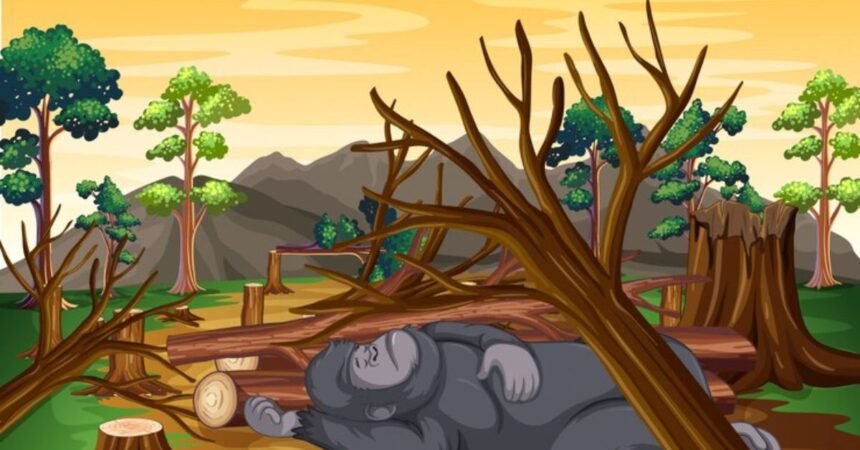In tabletop role-playing games, character creation is a vital part of the experience. For players in Savage Worlds, the Achilles’ Heel mechanic, particularly in the Savage Worlds Adventure Edition (SWADE) and its Super Powers Companion (SPC), plays a critical role in creating dynamic, balanced, and engaging superhero characters. Achilles’ Heel introduces a unique vulnerability that helps balance overpowered abilities, adding layers to both gameplay and storytelling.
This article delves into the significance of Achilles’ Heel in Savage Worlds. We’ll cover its role within the SWADE system, its importance in maintaining balance, and how it enhances character development. Furthermore, practical applications, common challenges, and tips for mastering this feature will be explored.
Detailed Explanation of Mastering Achilies Heel Savage Worlds SWADE SPC
Understanding Savage Worlds and SWADE
Savage Worlds is a fast, flexible, and fun tabletop role-playing system known for its universal rule set. Whether running campaigns in fantasy, sci-fi, or superhero universes, Savage Worlds keeps mechanics streamlined and action-focused. The latest version, Savage Worlds Adventure Edition (SWADE), refines the rules to provide a more balanced and accessible gaming experience.
SWADE introduces updates that improve mechanics, including a focus on combat, powers, and character creation. The system’s emphasis on versatility allows players to craft diverse characters with unique strengths, weaknesses, and roles in the party.
The Super Powers Companion (SPC)
The Super Powers Companion (SPC) for SWADE adds a specialized set of rules for superhero campaigns. The SPC is essential for creating characters with superhuman abilities, allowing players to access a wide range of powers, enhancements, and abilities. While SPC characters can become exceptionally powerful, Hindrances, like Achilles’ Heel, keep them balanced and relatable by introducing exploitable vulnerabilities.
What is Achilles’ Heel in Savage Worlds?
Achilles’ Heel is a Major Hindrance available in the Super Powers Companion (SPC) that represents a severe weakness specific to the hero. This vulnerability can stem from a rare substance, specific conditions, or environmental factors. While it grants additional character points during creation, the Achilles’ Heel also introduces a significant drawback that adversaries can exploit, adding tension and excitement to gameplay.
The Achilles’ Heel is not just a mechanical flaw; it serves as a key narrative tool. It mirrors famous superhero tropes, like Superman’s weakness to kryptonite or Green Lantern’s vulnerability to yellow energy, providing GMs with opportunities to challenge powerful characters.
Importance and Benefits of Achilles’ Heel in SWADE SPC
Achilles’ Heel as a Balancing Mechanism
In superhero campaigns, characters often wield extraordinary powers that can disrupt game balance. Achilles’ Heel counteracts this by giving each hero a critical weakness that villains or circumstances can target. This mechanic ensures that no character is invincible, making combat and encounters more strategic.
The Hindrance offers flexibility for both players and GMs. Heroes can be phenomenally strong, but their Achilles’ Heel introduces a layer of vulnerability that makes them more engaging to play and less likely to overwhelm the game.
Deepening Character Development
Achilles’ Heel is not just about mechanical balance—it plays a major role in character development. When crafting a superhero with extraordinary abilities, it’s essential to balance strength with weakness. Achilles’ Heel gives players the opportunity to shape their hero’s narrative, offering a potential backstory or personal challenge related to their flaw.
A well-constructed Achilles’ Heel can lead to powerful storytelling moments. For example, a hero whose powers are diminished by a certain condition might need to confront a villain who knows and exploits that weakness, leading to character growth and more engaging role-playing.
Strategic Use of Hindrances for Character Points
Savage Worlds allows players to take Hindrances, like Achilles’ Heel, in exchange for additional character points. These points can then be used to improve other abilities, making Achilles’ Heel a strategic choice during character creation. By accepting a specific vulnerability, players can enhance their hero’s powers, skills, or attributes, creating a well-rounded character.
Applications and Use Cases of Achilles’ Heel
Example 1: The Fire-Resistant Hero Weak to Cold
Imagine a character who is nearly impervious to fire, using their powers to extinguish flames, resist explosions, and generate heat-based attacks. However, their Achilles’ Heel is extreme vulnerability to cold. In an encounter with an ice-wielding villain, the hero’s otherwise invincible nature is threatened, forcing them to think creatively and play more cautiously. This scenario highlights how Achilles’ Heel adds complexity to a character’s strengths and weaknesses.
Example 2: Speedster with a Chemical Vulnerability
Consider a hero with super-speed abilities who can move faster than sound, dodge bullets, and race through hazardous situations. Their Achilles’ Heel could be a vulnerability to a specific chemical that causes severe physical impairment when exposed. In one session, an enemy scientist may use this knowledge to design traps laced with the substance, forcing the hero to face their limitation head-on.
Using Achilles’ Heel in Non-Superhero Settings
Achilles’ Heel isn’t limited to superheroes. It can also be adapted for characters in other genres within Mastering Achilies Heel Savage Worlds SWADE SPC. In a fantasy setting, for instance, a powerful mage may have a Hindrance tied to an inability to cast spells near certain magical artifacts. In a cyberpunk campaign, a heavily augmented character may have an Achilles’ Heel in the form of a vulnerability to EMP attacks.
These adaptations demonstrate the flexibility of Achilles’ Heel across various settings, enhancing both mechanical gameplay and narrative opportunities regardless of genre.
Challenges and Solutions for Incorporating Achilles’ Heel
Challenge 1: Overwhelming Weakness
One of the most common challenges when using Achilles’ Heel is ensuring that the weakness doesn’t overpower the character’s ability to function. If the Achilles’ Heel is too easily exploited or overly punishing, the character may become less fun to play. The game master (GM) must ensure that the Hindrance doesn’t dominate the character’s experience but remains an occasional narrative tool.
Solution: Balanced Hindrance Application
To mitigate this, the Achilles’ Heel should be used thoughtfully. The GM should design situations where the weakness is impactful, but not present in every encounter. Additionally, the character should have opportunities to overcome or mitigate their Achilles’ Heel through smart decisions or teamwork, adding excitement without frustration.
Challenge 2: Forgetting the Hindrance
Another issue that can arise is when Achilles’ Heel becomes an afterthought, failing to play a meaningful role in the campaign. This can happen if the GM doesn’t integrate the Achilles’ Heel into the story, or if the player designs a weakness that rarely comes into play.
Solution: Consistent Narrative Integration
To avoid this, players and GMs should collaborate to ensure the Achilles’ Heel is integrated naturally into the story. GMs can craft scenarios where the weakness provides a significant challenge, while players should be proactive in role-playing their vulnerability. Regularly revisiting the Hindrance ensures it remains a compelling aspect of the game without being overwhelming.
Challenge 3: Overusing Achilles’ Heel
On the opposite end of the spectrum, GMs may overuse the Achilles’ Heel, constantly exploiting the vulnerability to the point where it detracts from the fun of the game. If every enemy targets the Achilles’ Heel, the character can feel unfairly targeted, making it hard to enjoy the superhero fantasy.
Solution: Occasional Use with Dramatic Impact
Achilles’ Heel should be used sparingly for maximum impact. It’s best reserved for key moments in the campaign, where exploiting the weakness can heighten tension and drama. Rather than becoming a crutch for the GM, it should be an occasional obstacle that adds excitement when it comes into play.
Future Uses and Potential of Achilles’ Heel
Advanced Campaign Integration
As Savage Worlds evolves, Achilles’ Heel can play a larger role in more complex campaigns. GMs can use it to craft long-term story arcs, where the hero’s weakness becomes a central theme that builds over time. For example, a hero may discover new information about their Achilles’ Heel throughout the campaign, creating a quest for a cure or a way to mitigate the weakness.
Expanding Achilles’ Heel to Other Characters
Achilles’ Heel isn’t limited to heroes. Villains can also have critical weaknesses that heroes must exploit. A supervillain may have unstoppable powers but suffer from a specific limitation that the heroes can discover and use to their advantage. This adds layers of strategy to confrontations, making encounters more challenging and rewarding for players.
Cross-Genre Adaptation
As previously mentioned, Achilles’ Heel can extend beyond superhero campaigns into other Savage Worlds genres. Whether it’s a medieval knight vulnerable to poison or a space explorer susceptible to specific radiation, this Hindrance can be tailored to any setting, providing players and GMs with endless possibilities for narrative depth.
Conclusion
Achilles’ Heel in Mastering Achilies Heel Savage Worlds SWADE SPC Adventure Edition (SWADE) and the Super Powers Companion (SPC) is a powerful tool that enhances both gameplay mechanics and storytelling. By introducing a significant, exploitable weakness, Achilles’ Heel ensures that even the most powerful characters face meaningful challenges. This Hindrance balances gameplay, deepens character development, and encourages strategic thinking, making it a crucial element of superhero campaigns and beyond.
Players and GMs alike can use Achilles’ Heel to craft dynamic characters and engaging narratives. When used thoughtfully, it adds tension, excitement, and creativity to any Mastering Achilies Heel Savage Worlds SWADE SPC session. Mastering Achilles’ Heel opens the door to unforgettable stories, where heroes overcome both external threats and their personal vulnerabilities.
Frequently Asked Questions (FAQs)
1. What is Achilles’ Heel in Savage Worlds?
Achilles’ Heel is a Major Hindrance in the Mastering Achilies Heel Savage Worlds SWADE SPC Super Powers Companion, representing a severe weakness specific to a superhero. It is an exploitable vulnerability that adds balance and depth to characters with powerful abilities.
2. How does Achilles’ Heel affect gameplay?
Achilles’ Heel introduces a critical vulnerability that can be targeted by enemies or environmental factors. It balances strong abilities by adding a significant weakness that players must work around strategically.
3. Can Achilles’ Heel be used outside superhero campaigns?
Yes, Achilles’ Heel can be adapted for any Mastering Achilies Heel Savage Worlds SWADE SPC genre, including fantasy, sci-fi, or horror. It can represent various vulnerabilities, from magical weaknesses to technological malfunctions, depending on the setting.
4. How can GMs effectively use Achilles’ Heel in storytelling?
GMs can incorporate Achilles’ Heel into the narrative by designing scenarios where the character’s weakness plays a meaningful role. It should be used occasionally, during key moments, to enhance drama without overwhelming the player.
5. What are the benefits of choosing Achilles’ Heel for a character?
Taking Achilles’ Heel as a Hindrance provides additional character points during creation, which can be used to enhance powers or abilities. It also adds depth to the character and offers opportunities for exciting, high-stakes role-playing.








